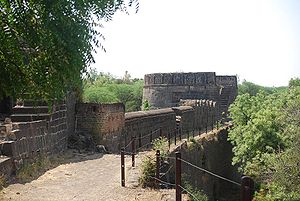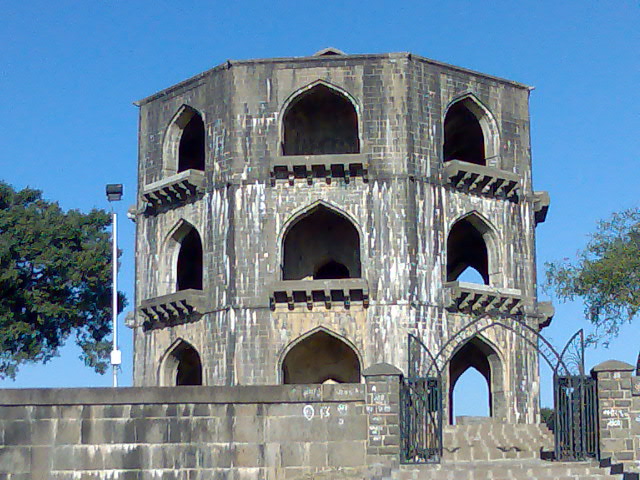Ahmednagar – a place with co-operative and historic importance
Of the many places that are worth paying a visit to in Maharashtra, the city of Ahmednagar is one of its kinds. Ahmednagar easily is a place with historic importance. Ahmednagar, as a district, is the largest district in the state of Maharashtra as far as area is concerned. Ahmednagar is known by Ahmed Shah Nizam Shah, who ruled this place. The name “Ahmednagar” stands for both the city as well as the district.
Location
The city of Ahmednagar is located in the heart of the district. Ahmednagar is interestingly located and connected to some nearby bigger cities. There is Pune to the southwest around 120 KMs; Aurangabad is located to the east about 120 KMs. From the metropolitan city of Mumbai, Ahmednagar is around 300 KMs to the east.
Geographical location of Ahmednagar
Ahmednagar is located on the banks of Sina River. There are three prominent physical divisions of the city, which are Central Plateau Region, the region of the northern and the southern plains and the Western Hilly Region.
Prominent rivers of Ahmednagar
Apart from the Sina River, there are three more rivers that are prominent. The Dhora River, the Pravara River and the Mula River are the three water bodies closely related to Ahmednagar.
Historic reference of Ahmednagar
Ahmednagar can be traced back to the Mauryan era. There is a mention to this city with reference to the Emperor Ashoka that dates back to 240 BC. It was referred to as a hamlet in those times. There is also recent historic importance of Ahmednagar as it was one of the most vital places during the war that were fought against the British.
Places to watch in Ahmednagar
There are many major attractions in the city. As Ahmednagar is closely related to Indian freedom struggle, there are a lot of instances that take us in the memory lane. Moreover, the Ahmednagar city is also a military camp. Ahmednagar is one of the cantonments of India.

The Ahmednagar Fort
One of the most popular destinations of the Ahmednagar city is the Ahmednagar fort. It was built by Ahmed Nizam Shah during the 15th century – in 1490. The fort holds a lot of importance as Jawaharlal Nehru, the first Prime Minister of free India penned the world famous The Discovery of India. The 18 meter walls of the fort still stand intact. 22 bastions support these walls.

Chand Biwi Mahal (The Tomb of Salabat Khan II)
The locals recognize the tomb of Salabat Khan II more as Chand Biwi Mahal than the tomb. The tomb is located around 15 KMs east of the city. It is situated on a mountain that raises about 750 to 800 feet above the ground level.
Some Other Places
Apart from these two places mentioned above, the Baugh Rauza is also a well-known place to visit. It is a fine black stone mausoleum that has a domed roof. The sacred Quran is inscribed. The Tank Museum is another place many people to pay a visit to. You can see a range of tanks that were used in war in different times.
Ahmednagar is also recognized for being a place of the Mughal emperor Aurangzeb’s Tomb. In Ahmednagar there is only a symbolic tomb of the emperor. According to his wish, his tomb exists in Khuldbad and is on the outskirts of Aurangabad. The Historical Museum and Research Centre is one place where you can find age old manuscripts, coins, as well as historic documents.
Spiritual destinations in Ahmednagar
Lord Ganesha is considered the main deity of Ahmednagar. The Vishal Ganapati Temple is at the helm of spiritual places in the city. The Mohata Devi Temple is also one such powerful spiritual place where hundreds of thousands of people visit to seek blessings of the Goddess.
The place with a unique power, however, happens to be Shani Shingnapur. It is an open to the air temple of Lord Shani. The strange but true thing about the place is that Lord Shani protects the residents of the town and therefore there are no doors to any house or shop.
Climate of Ahmednagar
Ahmednagar is known for its hot and dry weather. No wonder, the months from April to June are quite hot. It is really difficult in the months of May when the temperature are always on the rise. The rainfall is scanty on many occasions making summer time more difficult.
The best time to Ahmednagar
The period from October through March is the best time to visit the city. Due to the hot climatic conditions of the city, visiting the place in summer is a big no-no.
How to reach Ahmednagar
Most of the major cities of India are connected Ahmednagar. More importantly, the major cities around Ahmednagar are well-connected by road and air. So, reaching the place is not a problem. You can reach Ahmednagar by buses, trains or flights.
By Bus
Ahmednagar is connected by road from Pune, Aurangabad, Mumbai and Thane. On an average, reaching Ahmednagar from Pune or Aurangabad should take at least two-and-a-half hours to three hours. Travelling from Mumbai or Thane might take anywhere between five and six hours.
By Train
Ahmednagar is thickly connected to lots of places where there are train services available. The Pune-Nagpur Garib Rath Express, the Nagpur-Pune Garib Rath, Nagpur Pune Express, etc. are some of the trains that runs either two or three times a week. The Azad Hind Express, the Solapur-Gondia Slip Express and the Jhelum Express are some other trains that run to or from Ahmednagar on a daily basis.
By Flight
There are two airports in the vicinity of the city and it does not take more than three hours at the most to reach Ahmednagar from there. The Pune airport is one of them. The work for the second airport will soon be completed in the holy city of Shirdi. So, for people traveling greater distances, it would be prudent to travel to either Pune or Shirdi first and then reach Ahmednagar by road, because, Ahmednagar does not have an airport as yet.
Conclusion
Paying a visit to Ahmednagar would certain give you lifelong memories as there are many exciting things here to see. However, even with such a historical importance, Ahmednagar hasn't got a boost in tourism as it should have got.
- Written by Abhijit Dnyaneshwar Bangal.
- In category Travel, Tourism & Places.
- 11 years ago.
Like it on Facebook, Tweet it or share this article on other bookmarking websites.

